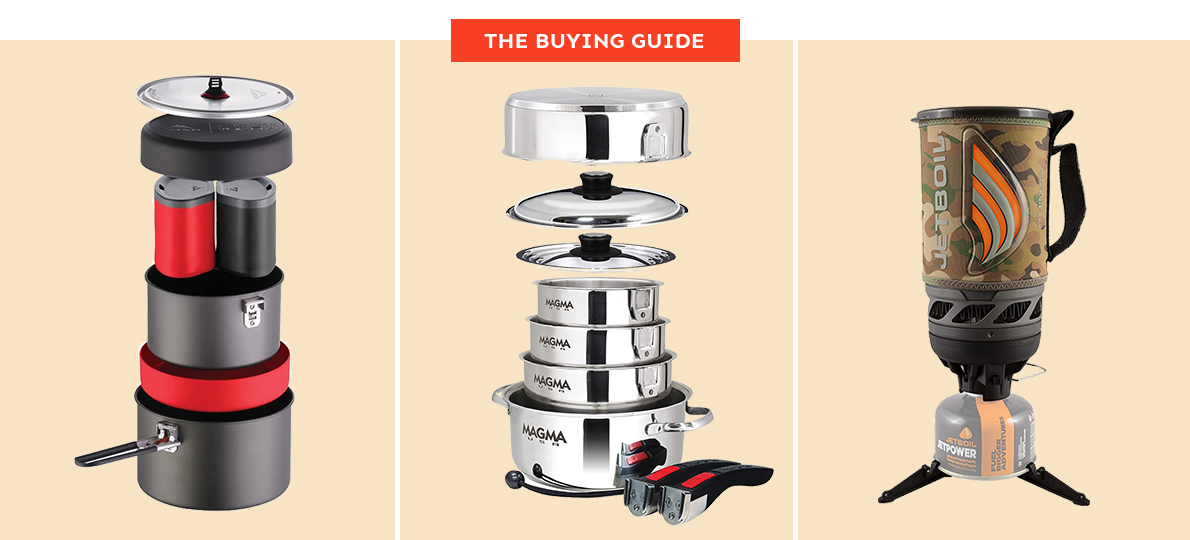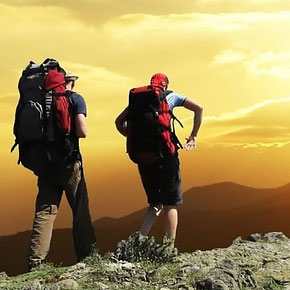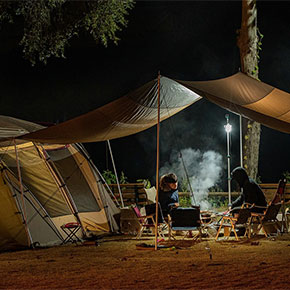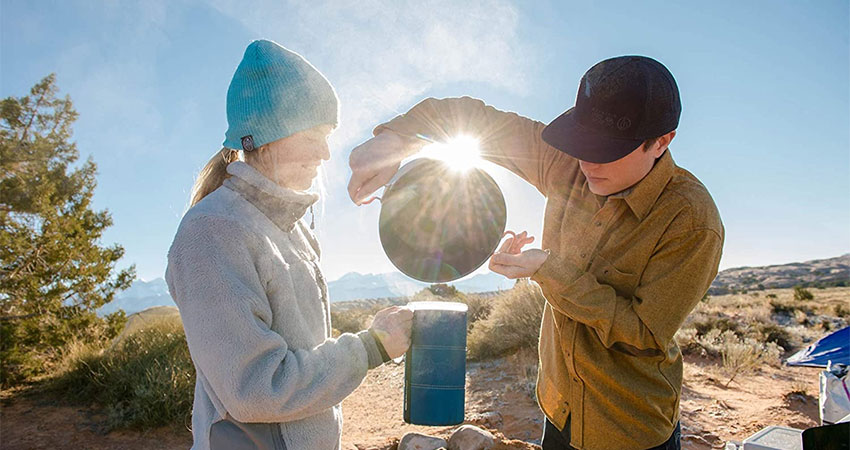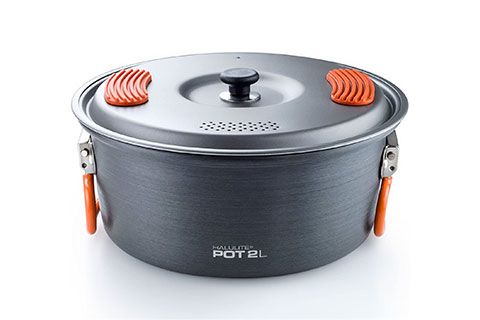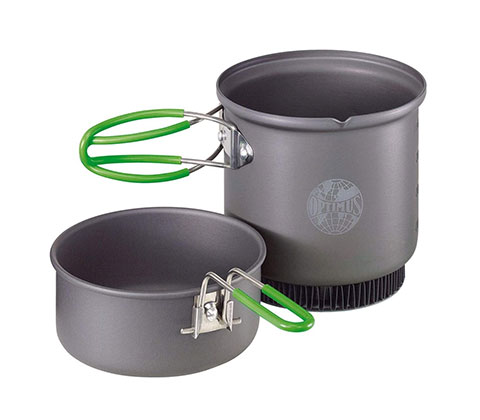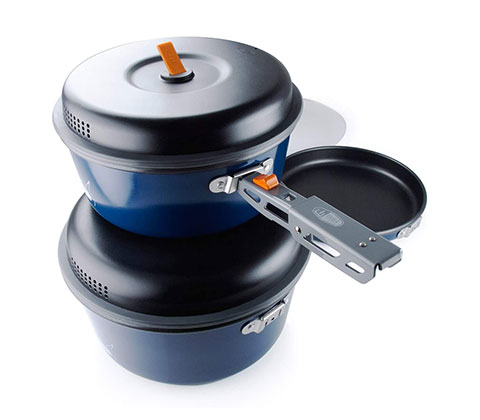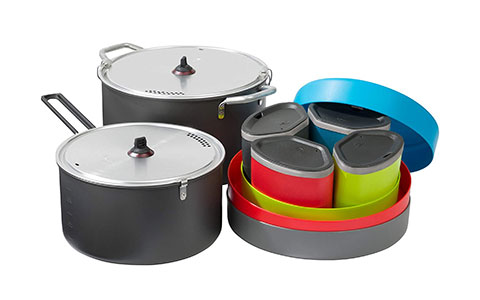The number of feeders will determine the size of your cooking sets. Generally, camping cook sets and mess kits are design for a specific number of users—mostly found in a single, a couple and a group of four. Ensure that everyone should have their own equipment—at the very least, their own utensil, bowl, cup and plate.
For lessening your weight, choose cooking tools that fit the number of people you’ll cooking for. These’re recommended sizes for cooking capacity:
| Single | = | 750 ml - 1 liter |
| 2 people | = | 1-2 liters |
| 3-4 people | = | 2-3 liters |
| 5 or more | = | 4+ liters |
Still, the number and type of cooking gears you’ll bring along also depends on the sorts of recipes you plan to do. If you just cook dehydrated foods for 2 backpackers, 1 pot might sufficient. But if you plan to go on campfire, extra cast-iron pots might be good.
When talking about camp cookware, one thing to keep in mind is the weight. Since backcountry activities definitely involve transportation, the items you bring with should be easy to move and lightweight enough to eliminate stress while travelling.
Still, this isn’t matter to the vehicle campers—like car campers, RVs, glampers and boat trippers—since they don’t have to carry things themselves and can have suitable cookware, like a Dutch oven, for more delicious meals.
Whether you’re a beginner or pro camper, it’s good to be prepared before setting the backcountry kitchen. You can design and customize your stuffs for suiting your preferences. These are camp cookware necessities and easy guides:
- Pot: Every set should have at least one cooking pot, even for a single set. Consider ones that has enough capacity, at least 1 liter for boiling water. For backpackers, look for pots are made from titanium, aluminum or hard-anodized aluminum for lighter weight and fuel efficiency.
- Pan: A fry pan doesn’t be included in all camping sets, especially for backpacking. You might find a nonstick aluminum pan, a folded-designed pan, like GSI Bugaboo series, is recommended. For base camps and direct-fire cooking, a roomy cast-iron skillet is vastly benefit. Lodge 10.5” skillet is our favorite.
- Serving Pieces: The plate and bowls are usually included in mess kits but not for others. Occasional campers might be fine with temporary tableware like plastic dishes and sporks. But, for serious ones, it’s worth to buy quality stuffs. If you pick plastic or silicone parts, be sure if they’re BPA-free.
- Utensils: For saving space and weight burden, many backpacking kits comes with sporks or foons—combination of spoon and fork—instead of traditional tools. If you find too cumbersome to use, pack your cutlery and utensils separately.
- Cups: Most big sets include cups that can be nested in the kits while small sets don’t. For flexible usage, a separate titanium camping mug, like Snow Peak Trek, is recommended.
- Knife & Cutting Board: Some camping sets include a small-sized cutting board and a knife that are useful for any occasions. However, if you plan to have good foods outside, it’s much better to have a decent knife and larger cutting board.
- Pot Gripper & Heat-Resistant Glove: These tools are unexpectedly helpful as universally used for any pots and pans to prevent burns. The pot grippers are good for some pots and pans don’t have handles while the heat-proof gloves are convenient for cast-iron cookware. Consider ones that are sturdy, thick and ergonomic designed. Make sure you will carry up your pots and pans safely.
Optional:
Campers can feel the same delicious taste at home with these facilities:
- Dutch Oven: Hearty-warm slow cooker braises, stews, soups and more.
- Camp Grill: As a main fuel or preparing tasty BBQs.
- Camp Oven: Never miss your favorite crusty pies, popcorns and crispy chicken wings even in backcountry.
- Extension Fork: To roast marshmallows, BBQs and more.
- French Press/Tea Maker: Taste your same favorite cups.
- Measuring cup/spoon: These small stuffs are unexpectedly useful.
- Cast-iron Griddle: Meat roast is a classic recipe for campfires.
- Hand-Crank Blender: No electricity, no problem.
